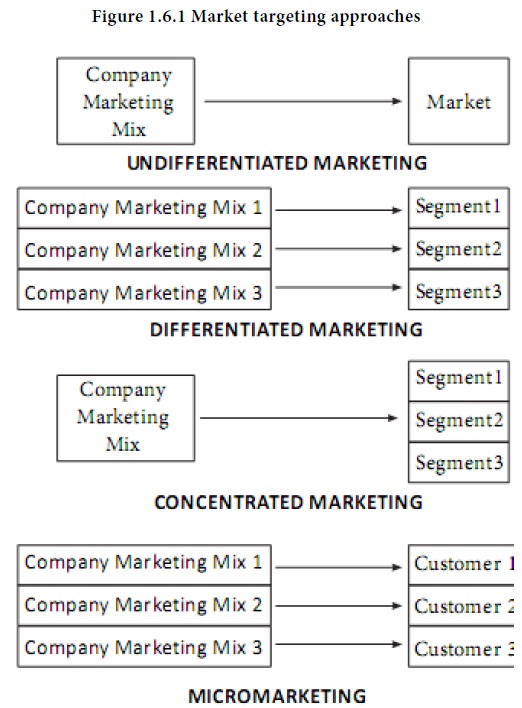Home | ARTS | Marketing Management
|
Targeting Approaches - Market Segmentation, Targeting and Positioning
MARKETING MANAGEMENT - Market Segmentation, Targeting and Positioning
Targeting Approaches - Market Segmentation, Targeting and Positioning
Posted On :
Target market selection is the next logical step following segmentation.
Targeting Approaches |
Target market selection is the next logical step following segmentation. Once the market-segment opportunities have been identified, the organization got to decide how many and which ones to target. Lot of marketing effort is dedicated to developing strategies that will best match the firm’s product offerings to the needs of particular target segments. The firm should look for a match between the value requirements of each segment and its distinctive capabilities. Marketers have identified four basic approaches to do this:
1. Undifferentiated Marketing
A firm may produce only one product or product line and offer it to all customers with a single marketing mix. Such a firm is said to practice undifferentiated marketing, also called mass marketing. It used to be much more common in the past than it is today. A common example is the case of Model T built by Henry Ford and sold for one price to everyone who wanted to buy. He agreed to paint his cars any colour that consumers wanted, ‘as long as it is black’. While undifferentiated marketing is efficient from a production viewpoint (offering the benefits of economies of scale), it also brings in inherent dangers. A firm that attempts to satisfy everyone in the market with one standard product may suffer if competitors offer specialized units to smaller segments of the total market and better satisfy individual segments.
2. Differentiated Marketing
Firms that promote numerous products with different marketing mixes designed to satisfy smaller segments are said to practice differentiated marketing. It is still aimed at satisfying a large part of the total market. Instead of marketing one product with a single marketing program, the firm markets a number of products designed to appeal to individual parts of the total market. By providing increased satisfaction for each of many target markets, a company can produce more sales by following a differentiated marketing approach. In general, it also raises production, inventory and promotional costs. Despite higher marketing costs, a company may be forced to practice differentiated marketing in order to remain competitive.
3. Concentrated Marketing
Rather than trying to market its products separately to several segments, a firm may opt for a concentrated marketing approach. With concentrated marketing (also known as niche marketing), a firm focuses its efforts on profitably satisfying only one market segment. It may be a small segment, but a profitable segment. This approach can appeal to a small firm that lacks the financial resources of its competitors and to a company that offers highly specialized good and services. Along with its benefits, concentrated marketing has its dangers. Since this approach ties a firm’s growth to a particular segment, changes in the size of that segment or in customer buying patterns may result in severe financial problems. Sales may also drop if new competitors appeal successfully to the same segment. Niche marketing leaves the fortunes of a firm to depend on one small target segment.
4. Micro Marketing
This approach is still more narrowly focused than concentrated marketing. Micro marketing involves targeting potential customers at a very basic level, such as by the postal code, specific occupation or lifestyle. Ultimately, micromarketing may

Activity 1.6.3
Match the following real life marketing examples with the above mentioned targeting approaches.
1. Titan now selling fashion eyewear and watches apart from the regular watches
2. A promotional email from Amazon.com based on your previous purchases
3. Air Deccan with its no-frills, single-class airline model
4. The battery-operated, eco-friendly electric car, Reva
Tags : MARKETING MANAGEMENT - Market Segmentation, Targeting and Positioning
Last 30 days 3077 views












